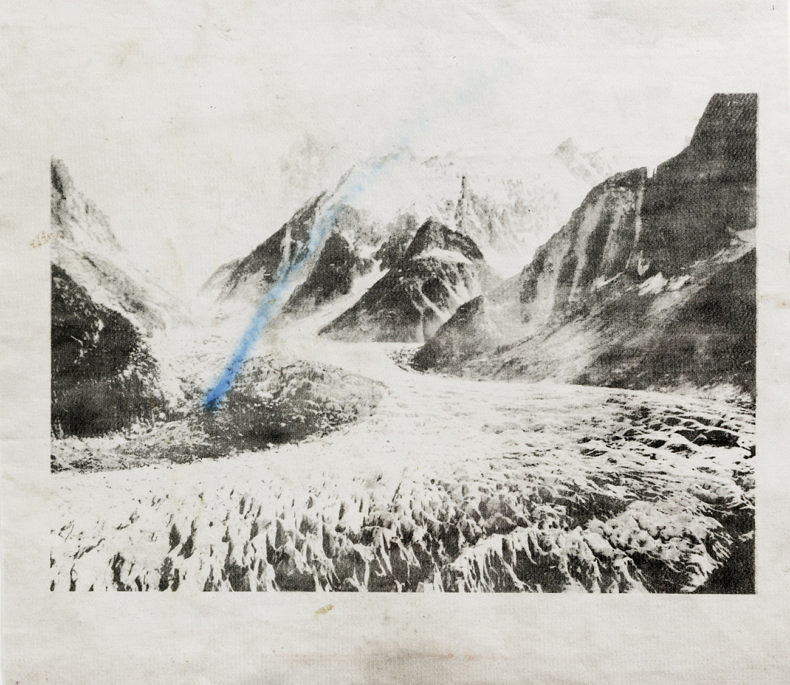
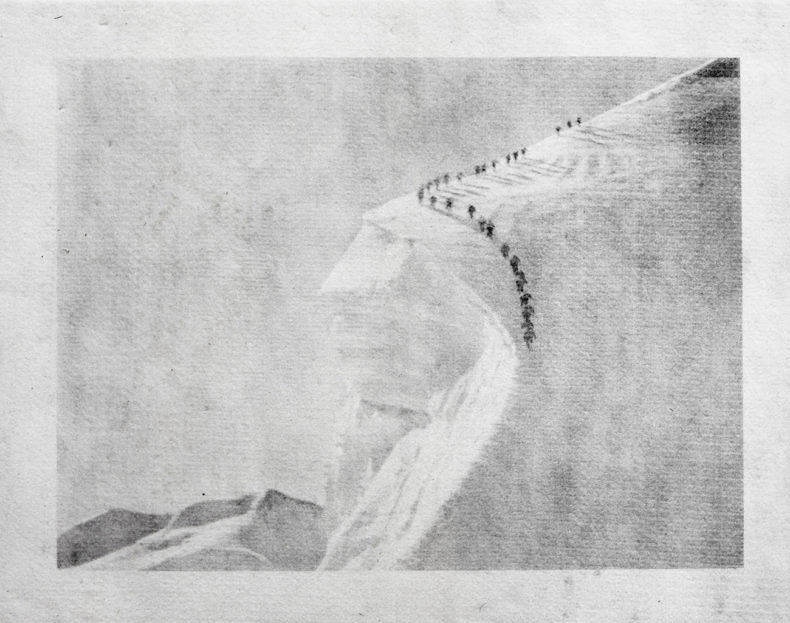
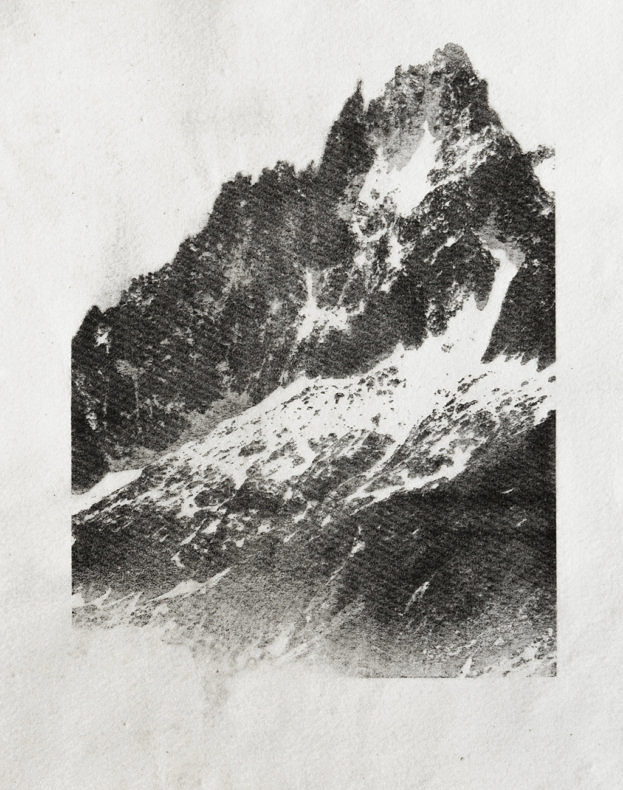
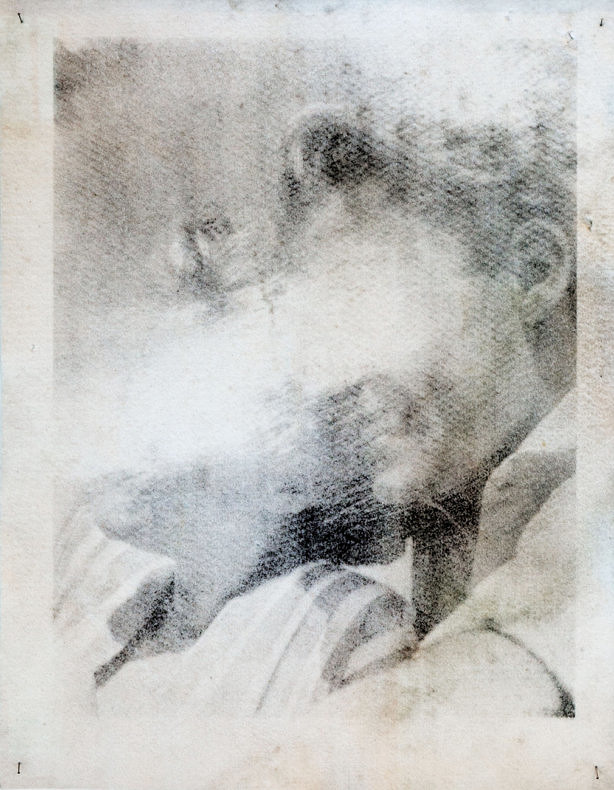
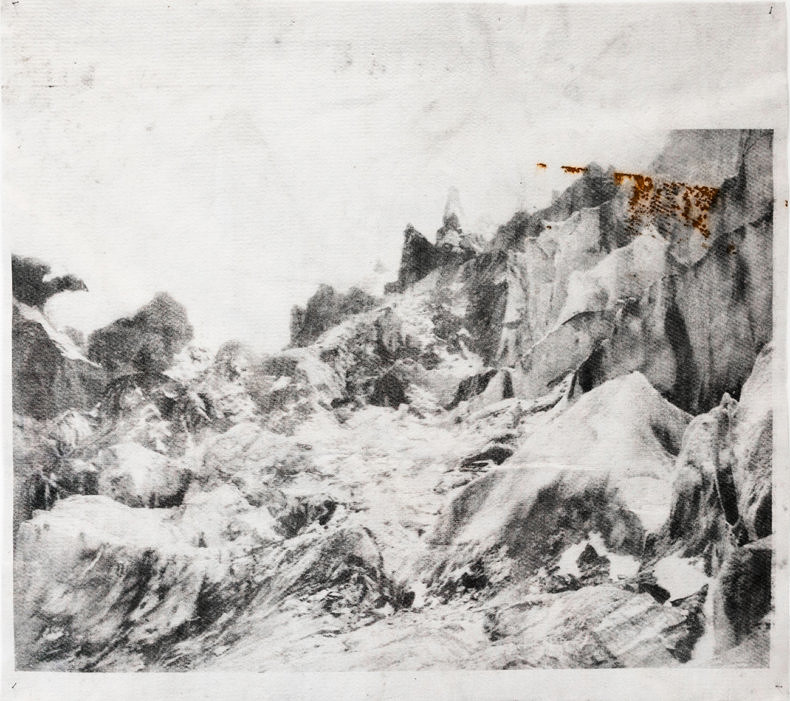
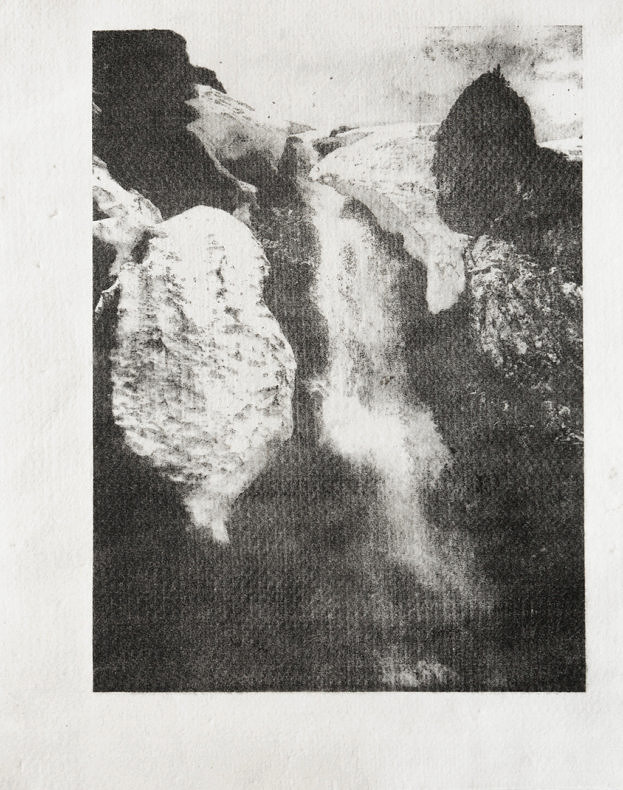
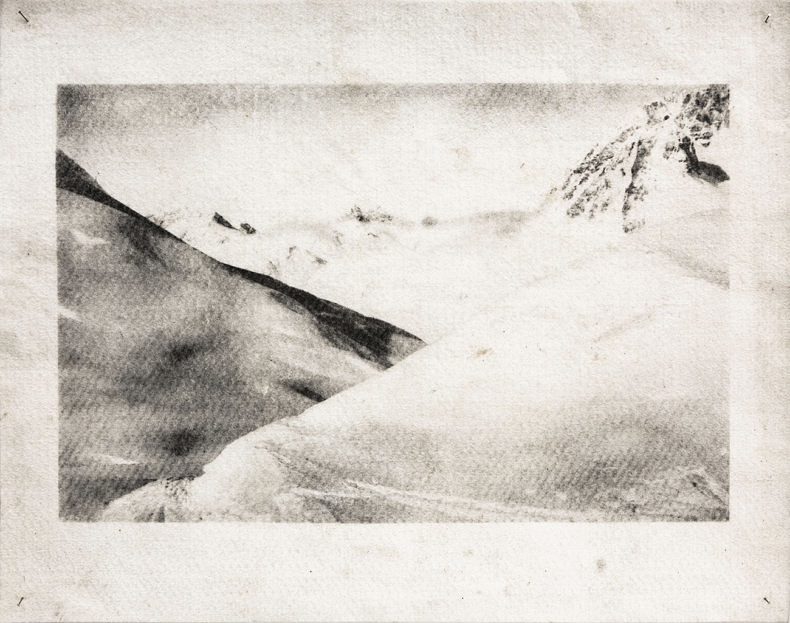
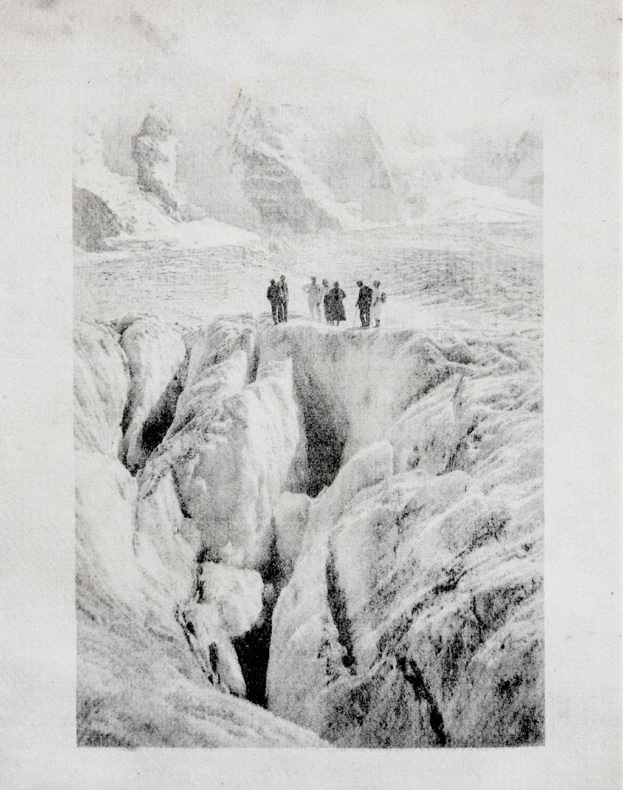
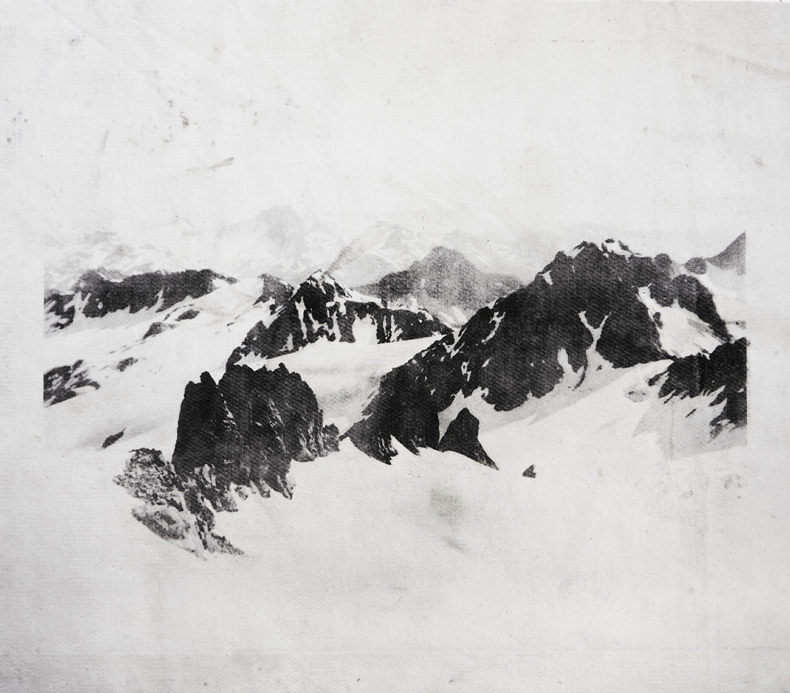
The on-going project «Monuments» reflects a relationship between technological evolution and climate change. Fascinated by the juxtaposition of the natural and the mechanical, Douglas Mandry travelled deep into the Swiss Alps, capturing chasms of ice protected by man-made, geotextile fabrics. Those « glacier blankets » are attempts to slow down the unavoidable process of disappearance.
From the fine ice blocks, Mandry prints photograms by replacing the photographic negative by the ice during the development process. By doing so, the ice melts and, the light shines through directly to the sensitive paper, creating an almost cosmic abstraction, condensed and visible view of the disappearing process. The result is printed onto glass plates through an industrial printing technique, sending the melting ice back to a frozen, transparent status — possibly eternal this time.
Meanwhile, collecting found images of glaciers from the early 20st century, Mandry transferred them onto actual pieces of geotextile, which have themselves been brought down from the alps after a season on the ice. Through the process of lithography, a double-exposure phenomenon happens: the images, fading memories of golden age in Switzerland’s tourism, become part of the nowadays technological attempts to preserve a past which no longer exists.
As result, an effect of collage where time and space are consciously and playfully shifted by the artist, a product of the digital age where images are reproduced endlessly in virtual formats. Mandry questions materiality. By using physical materials and printing methods, he examines notions of tangibility and permanence. In constant dialogue with his means of making, subject and surroundings, Mandry opens up new ways of engaging with the world around us
All images ©Douglas Mandry